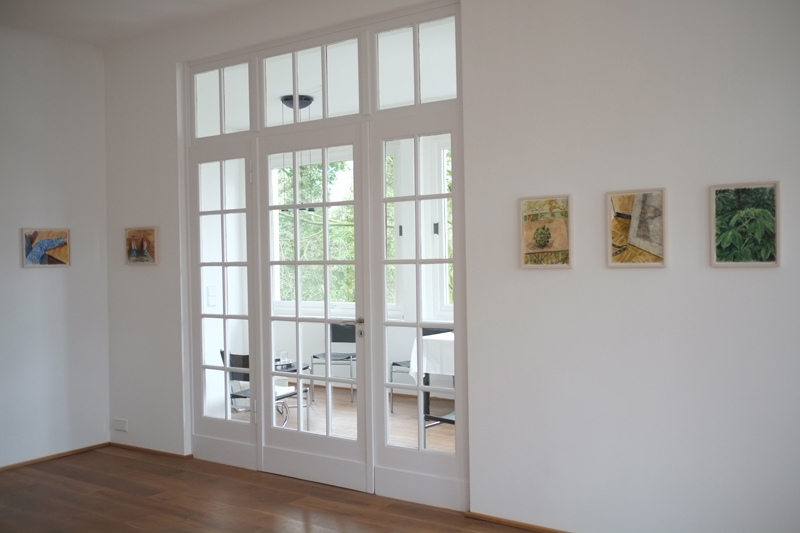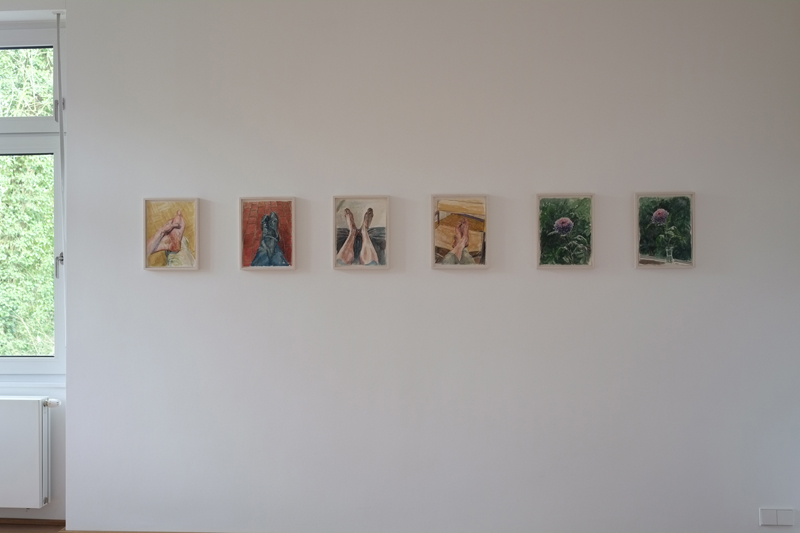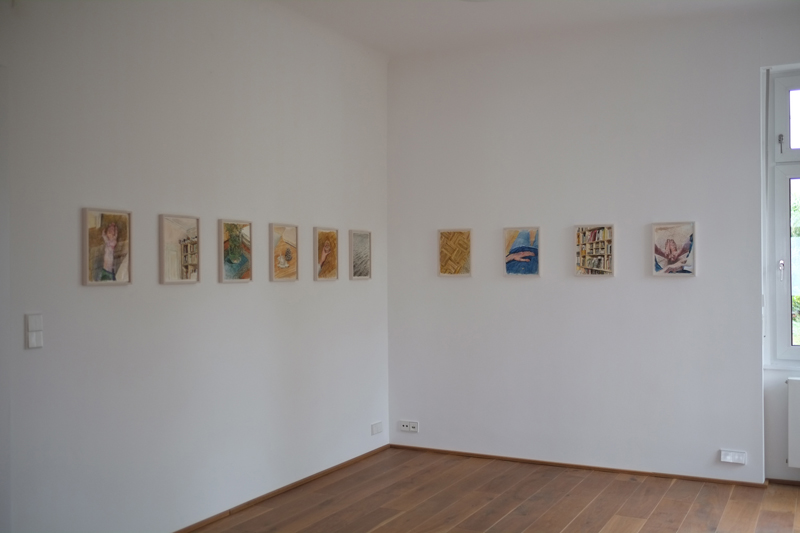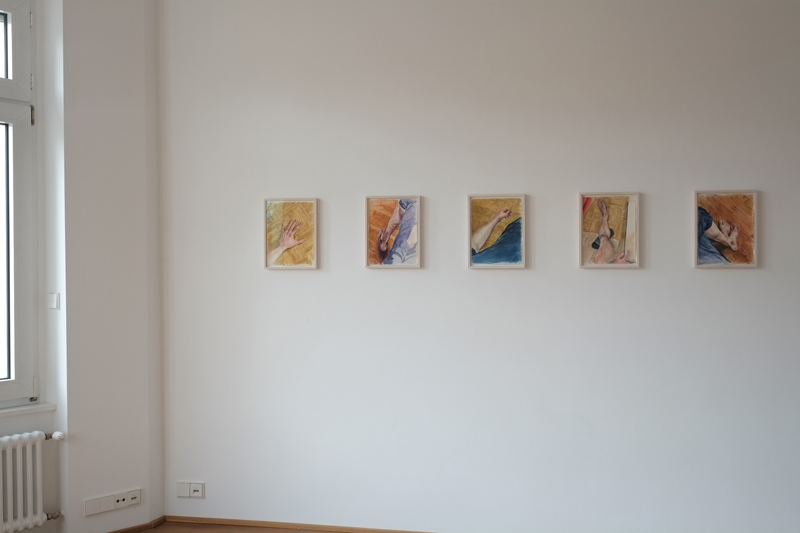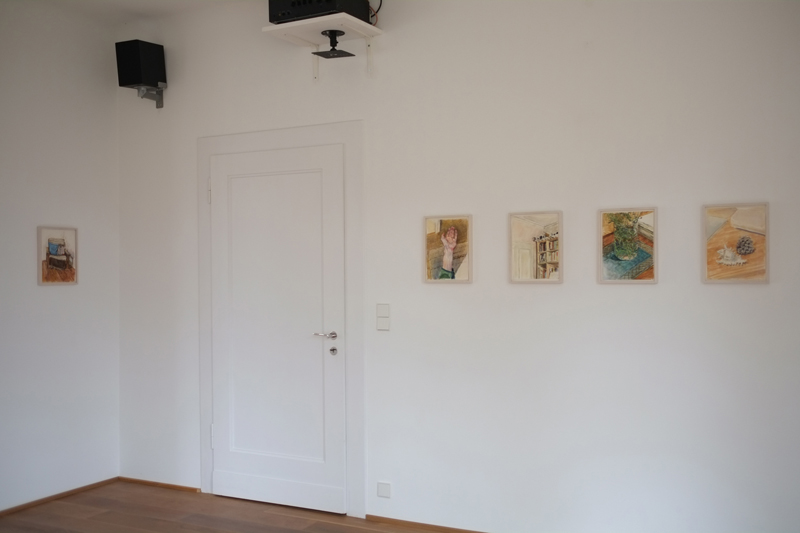Christopher Muller
February 9 – March 20, 2015
Christopher Muller has primarily focused his photographic work on objects that surround us in everyday life. He has deliberately set aside considerations of the production processes or the socio-economic structures from which they originate, the social milieus they belong to, or the possible subjective obsessions associated with them. Because these are everyday objects, our relationship with them is usually centered around their function. Their formal qualities and their relationships to one another are easily overlooked by us. Muller, on the other hand, has viewed these objects neutrally, concentrating on their mere presence and representing them in their actual size. His attention is directed toward how we interact with objects, what other perspectives on them are possible, and what we tend to block out. He also examines how we structure our living spaces using objects and which layers of time—pieces of our life history—are sedimented in such arrangements.
Muller’s photographic approach to objects has gone through several phases. These involved both different treatments of the relationships between the objects and different methods of media handling. Muller has worked with arranged compositions of objects as well as found constellations. Initially, he photographed objects frontally against a wall, producing an almost unphotographic, static impression. Later, he increasingly employed shifts in perspective and introduced a more subjective viewpoint. He incorporated the use of framing, cropping objects at the edge of the image, and focus as thematic elements in his work. Still, he consistently created his images through the material process of exposures using a mechanical device and chemical development.
In his new exhibition, he now presents painting for the first time. These new works also deal with objects. However, they are now joined by parts of his own body. With the introduction of his own body, our relationship to the objects is illuminated in a fundamentally different way. Not only does the body now become a direct component of the images, but the images themselves are produced through the fine motor skills of that same body. To embed this dual engagement with himself into an intimate dialogue, Muller has developed a new pictorial space. This space can be described as an immediate proximity space. Within this near-space of direct bodily environment, the body becomes both the object of observation and the acting subject—reaching into the space while also shaping it through painting. This also has consequences for the pictorial space, as it is no longer a detached autonomous realm but is tied to the body itself. The perspective on this space can be assumed by no one other than myself. It is not interchangeable. Every minimal movement or positioning of the body alters the emphasis within the pictorial space. Christopher Muller’s recent work explores a deeply intimate visual space—a “proximate space” where the body, perception, and surrounding objects engage in a subtle and continuous dialogue. The artist examines his own body both as subject and object, probing questions of presence, perception, and the ambiguous boundaries between self and environment.
Whether the foot rests firmly or hovers in suspension, whether it moves toward the other or leaves a gap, whether the gaze is directed forward or downward—these are not just compositional details, but part of a multi-layered, bodily self-dialogue. The right hand paints while the left hand becomes a nearby object of observation. The body plays three roles simultaneously: it is an object of study, an agent shaping the image, and a sensory system receiving and emitting impressions from the surrounding space.
Even when no body part is visibly depicted, the viewer senses their presence—as if they are touching the surrounding objects without seeing their own hand. This effect emerges from the painterly translation of physical intimacy into the image. The works imply that our relationship to ourselves is never static but shaped by our personal histories, social contexts, and our capacity to either merge with or distance ourselves from our surroundings.
This “proximate space” intensifies the ambiguity of seemingly clear distinctions between self and object. Although we learn to differentiate between “me” and “not me,” these definitions are daily renegotiated through gestures, moods, and self-contact. For instance, a single foot, outstretched and rosé-violet in tone, may be seen on one level as an anatomical object, on another as a familiar, cherished limb, and on yet another as an instrument of either support or hesitation in one’s engagement with the world.
The floor beneath, too, is never grasped in its entirety, but only through partial impressions—its smoothness, texture, warmth, or light. These impressions are context-bound and tied to our immediate actions, such as preparing for the next step. In this proximate field, things are never neutrally given—they are intertwined with our fate, just as we are with theirs.
Thus, Muller’s work evokes an ongoing inner balance—between confidence and hesitation, openness and retreat—and invites us to locate ourselves anew within this flux. It is an exercise in nuanced perception, in recognizing the shifting roles of what is foregrounded or marginal, what is connected or distinct, and what appears sympathetic or adverse within our lived environment.
To describe the proximate space with this kind of nuance, Muller has worked with a painting technique that demands particular skill: the ability to assert one’s own motor control against the unpredictability of the material—watercolor. This painting method must accommodate the autonomous spreading of water and the visual behavior of pigments that comes with it. At the same time, water is a medium that is intimately close to our inner bodily sensation and the tactile qualities of skin.
When painting with watercolor, the access to the wholeness of objects in our world becomes indirect, since these wholes are not represented through clear definitions but through accumulation and often only suggestion. The eye plays an active interpretive role in reading these “water islands” sensually. Detailed rendering or exact depiction of objects on a two-dimensional surface is no longer the goal—nor is it the goal to reconstruct the firmness or static character of the world. In the loose layering of a fluid tissue, other priorities take hold. Watercolor is ideal for setting aside objective interpretations of the world and allowing subjective discovery more room.
Muller’s color-flow structures are governed by subtle forces. Each blot of color follows directional polarities, where it must be decided what pushes against the edges, whether counter-blots absorb the force, continue it, stop it, or deflect it. Also involved are decisions about the intensity and density of overlapping layers, which shape the forces—and about the degree of transparency. In watercolor, the world is translucent. This is primarily due to the unobstructed white of the paper being the brightest layer and the pigments only settling as fine glazes on the surface. The more precisely an object or body part is depicted, the more the transparency and the suggestive connection are lost. The more transparent the rendering, the lighter, freer, and more open the interpretation of the object becomes.
Thus, every sheet becomes a complex dialogue between boundaries and openness to the surrounding space, between subjective penetration and detachment, between dynamic flow and material dissolution. To paint a leg from one’s proximate space in watercolor means letting go of the idea of a fixed object. The leg grows gradually through layers and flows defined by a rhythm, and it must resonate with its neighboring shapes—it only grows in dialogue with its context. Many decisions embedded in the process relate to the emotional interpretations of one’s own sensory condition and its range.
Muller’s new paintings lead us back to the beginning: How do we rediscover ourselves each day, when we extend our feelers into the world and try to grasp it? Our most fundamental self is the sensual act of perceiving and orienting in situations where self and world must come together. In our proximate space, therefore, what is negotiated is not only what the motor of our movement—our leg—looks like, or what the motor of our actions—our hands—are like, but how we build, work out, and find ourselves within our spheres of possibility. The process of finding myself, of coming to terms with myself within the touches and contours of my surrounding space—the constitution of my intimate environment—underlies the delicate watery structures in Muller’s work.
Installation Views
